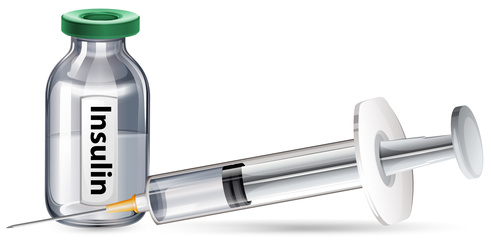2018/06/11

Here is a piece of good news for the critically ill patients of Japan and other Asian countries who are looking for safer and effective blood glucose control. Thanks to the team of researchers led by Jun Inaishi of Keio University School of Medicine, who modified the original Yale insulin infusion protocol and designed a simplified computer program-based protocol suitable for the Japanese patients.
Even though the Yale insulin infusion protocol is regarded as one of the best protocols available, it has been designed for patients in the Western countries and may not be suitable for Japanese patients. The main reason may be that the Asian diabetic patients are less insulin-resistant and less obese compared to those of Western countries. The new insulin infusion protocol is simple and efficient, providing a great relief to the Japanese patients for blood glucose management.
The researchers conducted a retrospective study to verify the safety and efficiency of their newly developed insulin infusion protocol and found that it is equally good and efficient as the original empirical controlled therapy.
Efficient management of blood glucose level is a tedious process, which involves blood glucose measurements and complicated manual calculations to determine the next insulin infusion rates. It necessitates the active involvement of various medical professionals and nurses. One of the main objectives of the researchers in developing the new insulin infusion protocol was to reduce the heavy workload as well as to avoid the calculation errors.
To compare the suitability of their insulin infusion protocol, the researchers carried out a study among two groups of the selected patients in the intensive care unit who had undergone cardiac surgery at the Keio University Hospital.
There were 17 patients in the infusion protocol (IP) group and 14 patients in the empirical control (EC) group. The blood glucose levels of the IP group were managed by the newly developed insulin infusion protocol and those of the EC group were managed by the empirical insulin infusion manually decided by the doctors.
For this study, the researchers set the target blood glucose level as 140-180 mg/dL, which was 100-139 mg/dL as per the original protocol. This change was made according to the guidelines recommended by the American Diabetes Association, which ensures safety to the critically ill patients.
The simplified computer program in the new insulin infusion protocol, using Visual Basic for Applications, could automatically calculate the next insulin infusion rate based on the input data of the current blood glucose level and the blood glucose measurement time, thus reducing the heavy workload and increasing the accuracy.
Compared to the original Yale insulin infusion protocol, this new protocol performed equally well in controlling the blood glucose levels in the critically ill patients. There was no major difference in the percentage of the achieved target blood glucose levels between the two groups.
The new insulin infusion protocol reduced the insulin infusion dosage for Japanese patients, preventing hypoglycemia, thus confirming the safety and efficiency of this protocol.
One of the limitations of the study was that there was no uniformity in the frequency of measurement of blood glucose levels, which was decided by the concerned doctors depending on the patient’s condition. Secondly, being a retrospective study, the chance of involvement of certain bias and confounding in this study cannot be ruled out.
In conclusion, the study successfully achieved its objective of developing a new safer and effective insulin infusion protocol with reduced burden.
Jun Inaishi, Shu Meguro, Arata Itoh, Yoshifumi Saisho, Junichiro Irie, Masami Tanaka, et al. Efficiency and Safety of New Insulin Infusion Protocol for Japanese Patients after Open-Heart Surgery. Diabetes and Endocrinology. 2018;1(1):4. DOI: 10.24983/scitemed.de.2018.00055